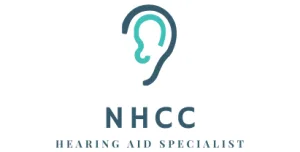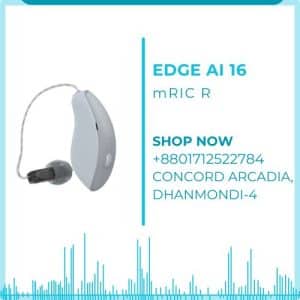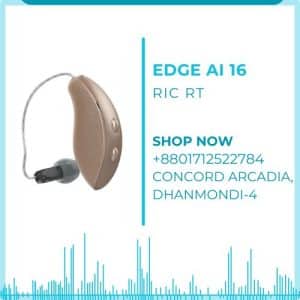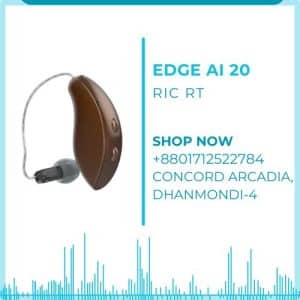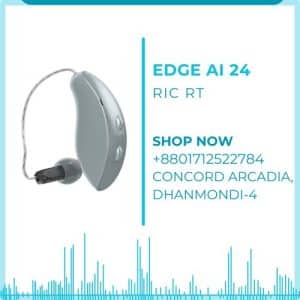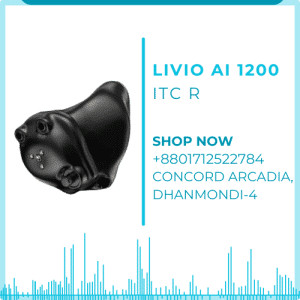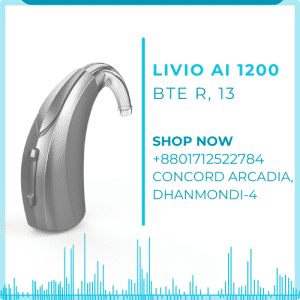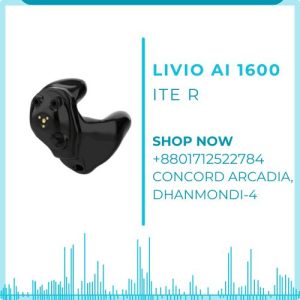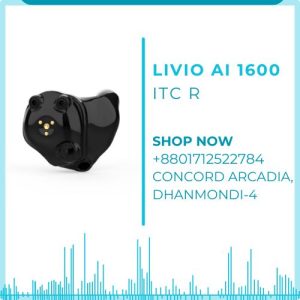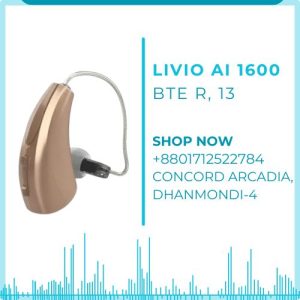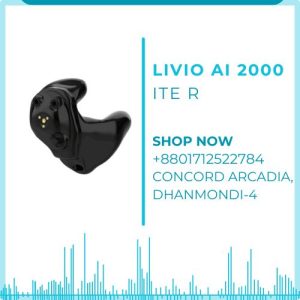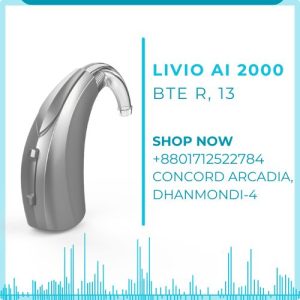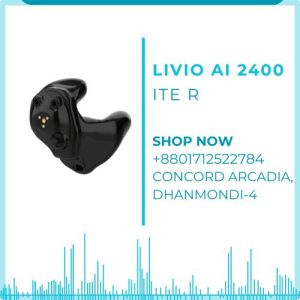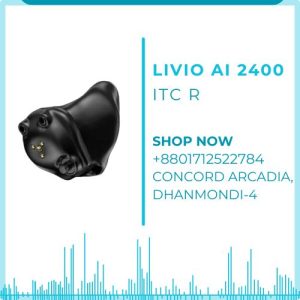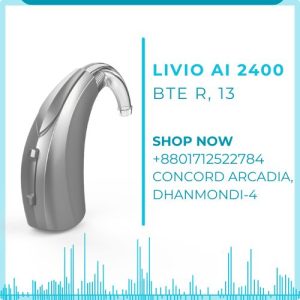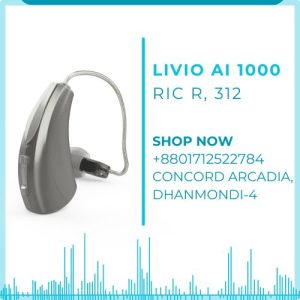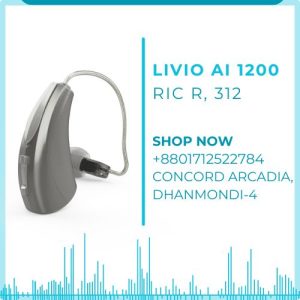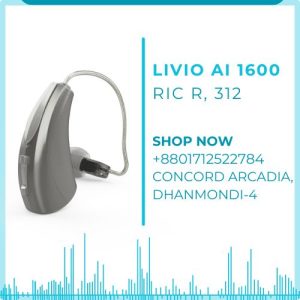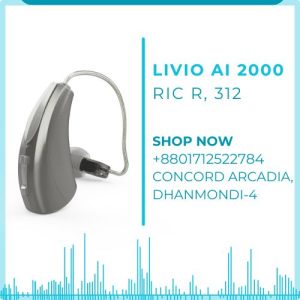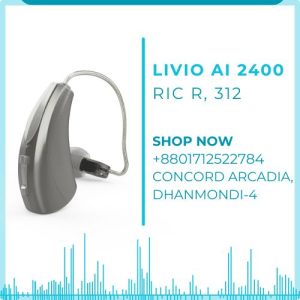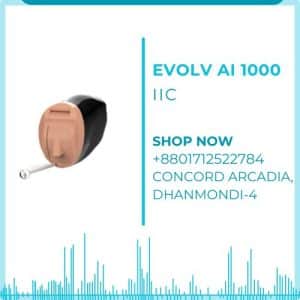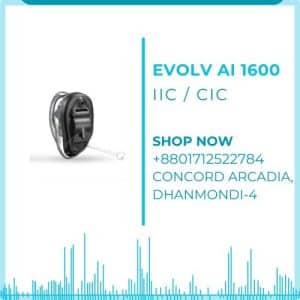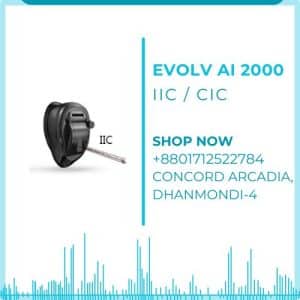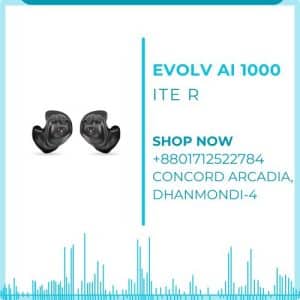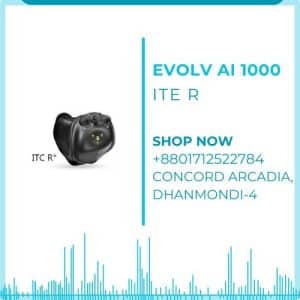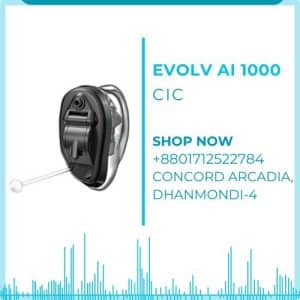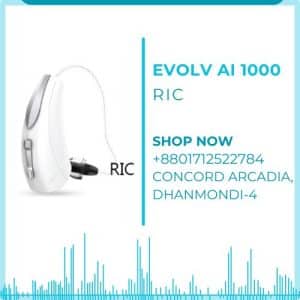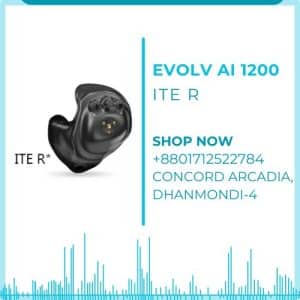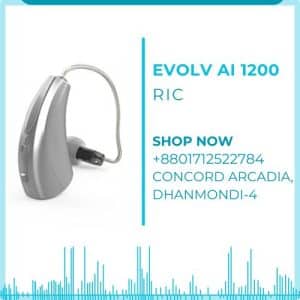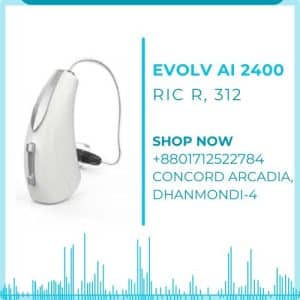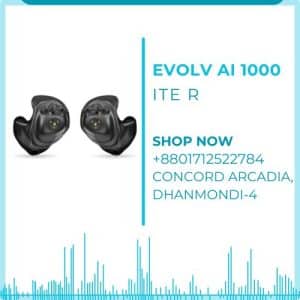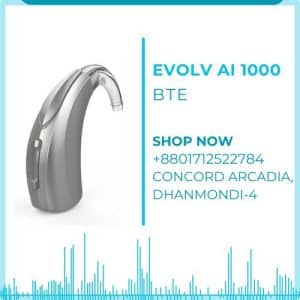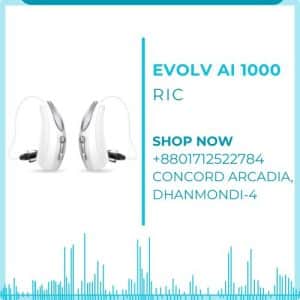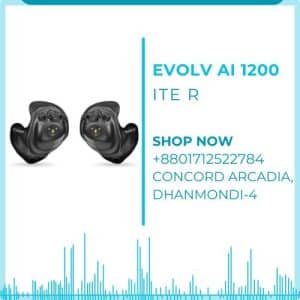–
–
Other Brand Models And Prices Available In Bangladesh
The following prices and features are subject to change and may vary based on the retailer or location. For the most accurate and up-to-date information, it’s recommended to check with the local supplier.
Phonak Hearing Aid Price
|
Model |
Features |
Performance Levels |
Price Range (BDT) |
|
Phonak Audéo Paradise |
Great sound quality, AutoSense 4.0, universal Bluetooth connectivity |
P90, P70, P50, P30 |
228,375 – 463,275 |
|
Phonak Audéo Lumity |
Enhanced speech clarity, universal Bluetooth connectivity, available in rechargeable and disposable battery versions |
L-312, L-R |
228,375 – 761,250 |
|
Phonak Naída Lumity |
Designed for severe hearing loss, durable (IP68 rating), integrates Roger technology |
L-SP |
261,000 – 761,250 |
|
Phonak Sky Lumity |
Pediatric line, optimized for noisy environments, enhanced connectivity |
LM, SP |
261,000 – 761,250 |
|
Phonak Virto Black |
Stylish design, Marvel technology, Bluetooth streaming, hands-free calls |
M90, M70, M50, M30 |
228,375 – 761,250 |
|
Phonak Virto M-Titanium |
Discreet custom hearing aid, made from titanium shell, Marvel technology |
M90, M70, M50, M30 |
261,000 – 761,250 |
|
Phonak Lyric |
Invisible, extended-wear, stays in the ear for months |
Subscription-based |
Subscription-based |
|
Phonak Bolero |
Suitable for moderate to severe hearing loss, available with rechargeable or disposable batteries |
Various |
228,375 – 761,250 |
|
Phonak ActiveVent |
Advanced speaker technology, compatible with Paradise models |
Various |
261,000 – 761,250 |
Cofoe Hearing Aid Price
|
Model |
Features |
Performance |
Price (BDT) |
|
Cofoe K-88 |
Digital sound processing, lightweight and comfortable, adjustable volume, suitable for mild to moderate hearing loss |
Provides clear sound quality and good noise reduction. Comfortable for long-term use. |
3,500 |
|
Cofoe K-188 |
Behind-the-ear (BTE) design, rechargeable battery, digital noise reduction, feedback cancellation, suitable for moderate to severe hearing loss |
Excellent sound amplification with minimal feedback and noise. Rechargeable battery enhances convenience. |
4,500 |
|
Cofoe K-82 |
In-the-ear (ITE) design, digital sound processing, adjustable volume, low power consumption, suitable for mild to moderate hearing loss |
Discreet design with clear sound output. Low power consumption ensures longer usage times. |
3,200 |
|
Cofoe K-86 |
BTE design, digital sound amplification, dual microphones, noise reduction technology, suitable for moderate hearing loss |
Dual microphones improve sound clarity. Effective noise reduction for clearer conversations in noisy environments. |
3,800 |
|
Cofoe K-187 |
BTE design, rechargeable battery, digital signal processing, feedback cancellation, suitable for severe hearing loss |
High amplification levels with clear sound. Rechargeable battery offers cost savings over time. |
4,200 |
|
Cofoe K-88A |
ITE design, digital sound processing, adjustable volume, low power consumption, suitable for mild to moderate hearing loss |
Small and discreet with good sound quality. Low power consumption for extended use. |
3,700 |
|
Cofoe K-188B |
BTE design, rechargeable battery, advanced digital sound processing, noise reduction and feedback cancellation, suitable for moderate to severe hearing loss |
High-quality sound processing with effective noise reduction. Rechargeable battery enhances usability. |
4,700 |
|
Cofoe K-82B |
ITE design, digital sound amplification, adjustable volume, low power consumption, suitable for mild to moderate hearing loss |
Discreet and comfortable with good sound quality. Low power consumption ensures long battery life. |
3,400 |
|
Cofoe K-86A |
BTE design, digital sound processing, dual microphones, noise reduction, suitable for moderate hearing loss |
Enhanced sound clarity with dual microphones. Effective noise reduction for better listening experiences. |
4,000 |
|
Cofoe K-187A |
BTE design, rechargeable battery, advanced digital sound processing, feedback cancellation, suitable for severe hearing loss |
High amplification with minimal feedback. Rechargeable battery for convenience and cost savings. |
4,500 |
Axon Hearing Aid Price
|
Model |
Features |
Performance |
Price (BDT) |
|
AXON K-80 |
80 dB sound output, noise reduction, feedback cancellation, GPS tracker |
Lightweight, comfortable, advanced digital sound processing, clear sound quality. |
20,000 |
|
AXON K-88 |
Adjustable volume, noise reduction, feedback cancellation, ergonomic design |
Easy to use, clear sound, comfortable for long-term wear. |
15,000 |
|
AXON F-22 |
Digital sound processing, noise reduction, feedback cancellation |
High-quality sound, user-friendly controls, suitable for mild to moderate hearing loss. |
12,000 |
|
AXON X-136 |
Advanced noise reduction, feedback cancellation, high-frequency range |
Superior sound clarity, robust build, suitable for severe hearing loss. |
25,000 |
|
AXON A-155 |
Digital sound processing, background noise suppression, feedback cancellation |
Excellent sound quality, easy to adjust, comfortable for extended use. |
18,000 |
|
AXON X-168 |
129 dB max output, 50 dB max gain, harmonic wave distortion ≤5%, frequency 450-3500 Hz |
High amplification, adjustable tone, compact design, suitable for various hearing environments. |
72,000 |
Siemens Hearing Aid Price
|
Model |
Features |
Performance |
Price (BDT) |
|
Siemens 3px |
– 24 Channels, Phone App, Learning |
– High sound clarity, Own Voice Processing (OVP), EchoShield, Ultra HD e2e Wireless |
147,000 |
|
Siemens 5px |
– 32 Channels, Phone App, Learning |
– Improved noise reduction, Speech Master technology, HD Music program |
180,000 |
|
Siemens 7px |
– 48 Channels, Phone App, Learning |
– Enhanced dynamic range, Twin Phone, Tinnitus Therapy |
224,000 |
Widex Hearing Aid Price
|
Model |
Features |
Performance |
Price (BDT) |
|
Widex Evoke 440 |
– Fluid Sound Controller for automatic sound adjustments, SoundSense Adapt technology, Personalizable via EVOKE app, Natural and lifelike sound |
– Premium performance, Best for all environments, Adapts to user preferences over time |
200,000 – 250,000 |
|
Widex Evoke 330 |
– Similar features to Evoke 440 but with slightly fewer customization options, Advanced sound processing, Automatic environment adaptation |
– High performance, Suitable for various environments, Personalizable settings via app |
150,000 – 200,000 |
|
Widex Evoke 220 |
– Basic sound processing, Some automatic adjustments, Basic customization options via EVOKE app |
– Mid-range performance, Good for quiet to moderate environments |
120,000 – 150,000 |
|
Widex Evoke 110 |
– Entry-level sound processing, Minimal automatic adjustments, Limited customization |
– Basic performance, Best for quiet environments |
80,000 – 120,000 |
|
Widex Moment Sheer |
– PureSound technology for natural sound, MySound AI personalization, Direct streaming capabilities, Rechargeable options |
– Premium performance, Suitable for all environments, Advanced AI-driven sound personalization |
250,000 – 300,000 |
|
Widex Moment |
– PureSound technology, MySound AI personalization, Direct streaming from devices, Rechargeable options |
– High performance, Excellent for various environments, AI-driven sound adjustments |
200,000 – 250,000 |
|
Widex SmartRIC |
– Long battery life (up to 37 hours), Portable charger, Wind noise reduction, MySound technology, Compact and stylish design |
– High performance, Great for active lifestyles, Designed for noisy environments |
150,000 – 200,000 |
|
Widex Beyond |
– Direct connectivity to iOS and Android devices, Advanced sound processing, Personalized settings through Beyond app |
– High performance, Ideal for tech-savvy users, Excellent connectivity features |
180,000 – 230,000 |
Oticon Hearing Aid Price
|
Model |
Features |
Performance |
Price |
|
Oticon Opn S |
– 360° sound awareness |
Superior sound processing |
180,000 – 360,000 per ear |
|
– Speech understanding in noisy environments |
Clear speech in challenging situations |
||
|
– Rechargeable option |
Long-lasting battery life |
||
|
– Bluetooth connectivity |
Seamless connectivity with devices |
||
|
Oticon Opn Play |
– Specifically designed for children |
Tailored for young users |
138,000 – 207,000 per ear |
|
– OpenSound Navigator for clearer speech |
Enhanced speech clarity |
||
|
– Water and dust resistance |
Durability in various conditions |
||
|
– Personalized sound adjustments |
Customizable to individual preferences |
||
|
Oticon Ruby |
– Affordable premium hearing aid |
High-quality sound at an accessible price |
120,000 – 240,000 per ear |
|
– Clear, natural sound |
Natural and balanced sound |
||
|
– Reliable performance in various listening environments |
Consistent performance in diverse settings |
||
|
– Made for iPhone compatibility |
Easy connectivity with Apple devices |
||
|
Oticon Xceed |
– Power for severe to profound hearing loss |
Enhanced amplification for severe hearing loss |
165,000 – 322,000 per ear |
|
– Clear speech and reduced feedback |
Improved clarity without distortion |
||
|
– Connectivity to smartphones and other devices |
Versatile connectivity options |
||
|
– Customizable fitting for comfort |
Comfortable and secure fit |
||
|
Oticon Siya |
– Advanced noise reduction |
Reduced background noise |
96,000 – 240,000 per ear |
|
– Speech understanding in complex environments |
Clear understanding in challenging situations |
||
|
– Telecoil option for improved phone use |
Enhanced telephone compatibility |
||
|
– Durable and discreet design |
Long-lasting and inconspicuous design |
What To Consider Before Buying Hearing Aid?
Before buying a hearing aid, there are several important factors to consider to ensure you make the best choice for your hearing needs, lifestyle, and budget. Here’s a comprehensive guide:
1. Hearing Test and Diagnosis
– Professional Evaluation: Always start with a thorough hearing evaluation by an audiologist. This will determine the type and degree of hearing loss.
– Medical Considerations: Ensure there are no underlying medical conditions causing your hearing loss that might need treatment.
2. Types of Hearing Aids
# a. Behind-the-Ear (BTE)
– Description: Worn behind the ear and connected to an earpiece inside the ear canal.
– Suitable For: Mild to profound hearing loss.
– Pros: Durable, easy to handle, can house larger batteries for longer life.
– Cons: More visible than other types.
# b. Mini Behind-the-Ear (Mini BTE)
– Description: A smaller version of BTE, often with a thin tube connecting to the ear canal.
– Suitable For: Mild to moderate hearing loss.
– Pros: More discreet than traditional BTE, comfortable.
– Cons: Smaller batteries may mean shorter battery life.
# c. Receiver-in-Canal (RIC) / Receiver-in-the-Ear (RITE)
– Description: Similar to BTE, but the receiver (speaker) is placed in the ear canal, connected by a thin wire.
– Suitable For: Mild to severe hearing loss.
– Pros: Comfortable, more natural sound quality, less feedback.
– Cons: More susceptible to earwax and moisture damage.
# d. In-the-Ear (ITE)
– Description: Custom-made to fit in the outer ear.
– Suitable For: Mild to severe hearing loss.
– Pros: Easy to insert, larger size can accommodate more features.
– Cons: More visible than smaller devices, can pick up wind noise.
# e. In-the-Canal (ITC)
– Description: Custom-made to fit partly in the ear canal.
– Suitable For: Mild to moderate hearing loss.
– Pros: Less visible, more natural sound.
– Cons: Smaller size can be challenging to handle, shorter battery life.
# f. Completely-in-the-Canal (CIC)
– Description: Custom-made to fit completely inside the ear canal.
– Suitable For: Mild to moderate hearing loss.
– Pros: Nearly invisible, reduced wind noise.
– Cons: Very small, hard to handle, limited features, shorter battery life.
# g. Invisible-in-the-Canal (IIC)
– Description: The smallest type, fits deep inside the ear canal.
– Suitable For: Mild to moderate hearing loss.
– Pros: Completely invisible, natural sound quality.
– Cons: Very small, difficult to handle, more susceptible to earwax buildup.
# h. Bone Conduction Hearing Aids
– Description: Transmits sound through the bones of the skull to the inner ear.
– Suitable For: Conductive hearing loss, single-sided deafness.
– Pros: Suitable for those who can’t use traditional hearing aids.
– Cons: Larger, less discreet.
# i. CROS/BiCROS Hearing Aids
– Description: Designed for people with hearing loss in one ear.
– Suitable For: Single-sided deafness.
– Pros: Transmits sound from the poorer ear to the better ear.
– Cons: Can be complex to fit and tune.
# j. Body-Worn Hearing Aids
– Description: Consists of a small box worn on the body connected to the ear by a wire.
– Suitable For: Severe to profound hearing loss.
– Pros: Powerful amplification, long battery life.
– Cons: Bulky, not widely used today.
# k. Extended Wear Hearing Aids
– Description: Placed deep in the ear canal by an audiologist and can be worn for several months.
– Suitable For: Mild to moderate hearing loss.
– Pros: Invisible, no need for daily maintenance.
– Cons: Requires professional placement, higher ongoing cost.
# l. Custom Hearing Aids
– Description: Tailor-made to fit the unique shape of your ear.
– Suitable For: Varies based on the type (ITE, ITC, CIC, IIC).
– Pros: Personalized fit, maximum comfort, and often better sound quality.
– Cons: Typically more expensive, requires professional fitting, and may take longer to manufacture.
3. Technology and Features
– Sound Quality: Look for advanced signal processing features like noise reduction, feedback management, and directional microphones.
– Connectivity: Many modern hearing aids offer Bluetooth connectivity for streaming audio from phones, TVs, and other devices.
– Rechargeability: Consider whether you prefer rechargeable hearing aids or those that use disposable batteries.
– Adjustability: Some hearing aids allow for fine-tuning either through a professional or via a smartphone app.
4. Lifestyle and Environment
– Activity Level: Choose a hearing aid that matches your activity level. For instance, if you lead an active lifestyle, look for durable, water-resistant models.
– Daily Environments: Consider the environments you frequent, such as noisy workplaces, quiet home settings, or social gatherings, and choose a hearing aid that can handle those conditions.
5. Comfort and Aesthetics
– Fit and Comfort: Ensure the hearing aid is comfortable to wear for long periods. Custom-fitted models might offer better comfort.
– Visibility: If discretion is important, look for smaller, less visible models.
6. Costs
– Budget: Hearing aids can be expensive. Determine your budget and explore financing options if necessary.
– Charity: Check if there is any charity organization that covers hearing aids or if there are any available subsidies or discounts if needed.
7. Trial Period and Warranty
– Trial Period: Many hearing aids come with a trial period. Make sure you take advantage of this to ensure the hearing aid meets your needs.
– Warranty and Repairs: Check the warranty details and understand what is covered. Consider the availability of service and repairs.
8. Support and Follow-up Care
– Professional Support: Ensure you have access to professional support for adjustments and follow-up care.
– Maintenance: Understand the maintenance requirements of the hearing aid, including cleaning and battery replacement.
9. Brand and Model
– Reputation: Research different brands and models, read reviews, and consider the reputation of the manufacturer.
– Advanced Features: Some brands offer unique technologies, such as Oticon’s BrainHearing technology, which can provide better sound processing and speech understanding.
10. User Feedback and Reviews
– User Reviews: Read reviews and testimonials from other users. This can provide insight into the real-world performance and reliability of the hearing aid.
11. Regulatory Approval
– Certification: Ensure the hearing aid is certified and meets regulatory standards in your country.
What to Expect While Fitting Your Hearing Aid?
1. Initial Assessment and Fitting
– Comprehensive Hearing Evaluation: Before fitting, ensure an audiologist conducts a thorough hearing test to understand your specific hearing loss.
– Ear Impressions: For custom hearing aids (ITE, ITC, CIC, IIC), the audiologist may take ear impressions to ensure a precise fit.
– Device Selection: Based on your hearing needs, lifestyle, and budget, the audiologist will help you select the most suitable hearing aid type and model.
2. Initial Fitting Appointment
– Physical Fit: The audiologist will check that the hearing aid fits comfortably in or behind your ear. Proper fit is crucial for comfort and performance.
– Programming the Hearing Aid: The hearing aid is programmed to match your hearing loss profile. This involves adjusting settings to amplify sounds based on your audiogram.
– Sound Check: You will be asked to test the hearing aid to ensure the sound is clear and comfortable. Adjustments may be made on the spot.
3. Learning to Use Your Hearing Aid
– Insertion and Removal: Learn how to correctly insert and remove your hearing aid. Practice until you feel confident.
– Volume Control and Programs: Understand how to adjust the volume and switch between different listening programs if your device offers this feature.
– Battery Care: Learn how to change batteries or recharge the device if it’s rechargeable. Understand the expected battery life and how to maximize it.
4. Adapting to Your Hearing Aid
– Initial Adjustment Period: It can take time to get used to the new sounds and the presence of the hearing aid. Wear the hearing aid for a few hours each day, gradually increasing the duration.
– Background Noise: Initially, background noise might seem loud. Modern hearing aids have noise reduction features, but your brain also needs time to adjust.
– Speech Recognition: You might notice an improvement in understanding speech, especially in quiet environments. Understanding speech in noisy environments can take longer to adapt to.
5. Follow-Up Appointments
– Routine Check-Ups: Schedule follow-up visits with your audiologist. These appointments are crucial for fine-tuning the hearing aid settings and addressing any issues.
– Performance Feedback: Provide feedback on your hearing aid’s performance in different environments. This helps the audiologist make necessary adjustments.
6. Maintenance and Care
– Daily Cleaning: Clean your hearing aid daily to prevent earwax and debris buildup. Follow the manufacturer’s cleaning instructions.
– Storage: Store your hearing aid in a dry, safe place when not in use. Consider using a dehumidifier to keep it moisture-free.
– Regular Check-Ups: Have your hearing aid professionally checked and cleaned regularly to ensure optimal performance.
7. Troubleshooting Common Issues
– Feedback/Whistling: Ensure the hearing aid fits properly. Feedback can occur if it’s loose or not inserted correctly.
– Sound Quality: If the sound is muffled or unclear, check for earwax blockage, or consult your audiologist for adjustments.
– Connectivity Issues: For Bluetooth-enabled hearing aids, ensure your device is compatible and correctly paired.
Additional Tips
– Realistic Expectations: Understand that hearing aids do not restore normal hearing but improve your ability to hear and communicate.
– Patience and Persistence: Adaptation can take time. Be patient and persistent in wearing and adjusting to your hearing aid.
–
–
